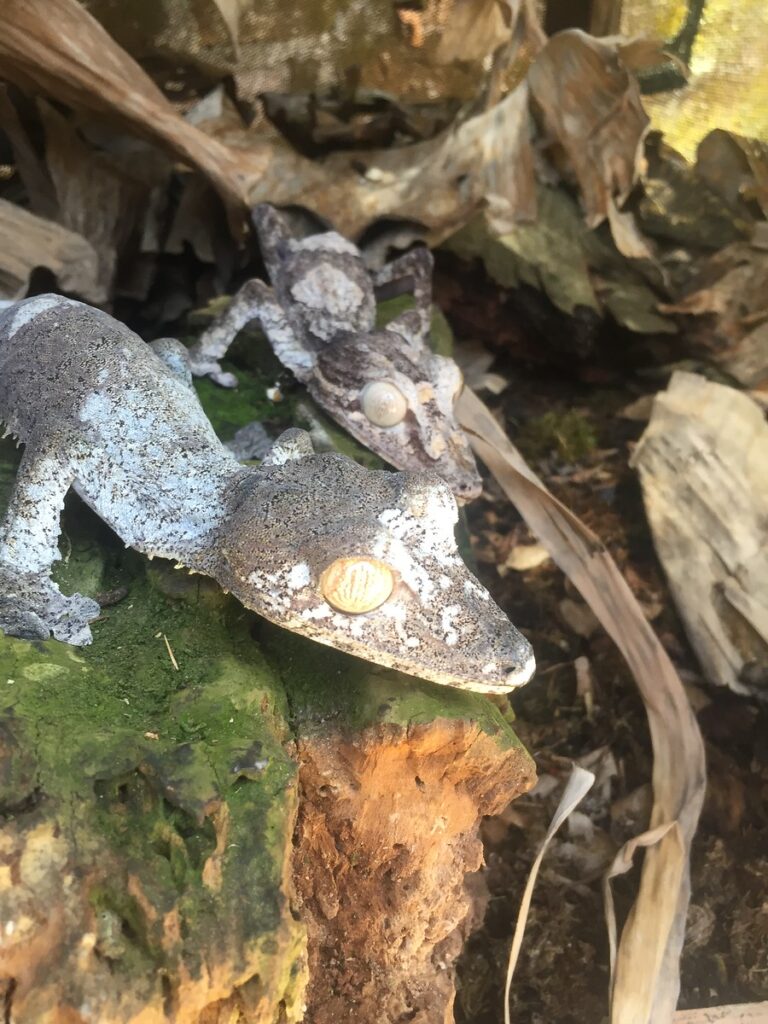As usual for Madagascar, the geckos here are diverse and unique. Over 80 species are endemic to the island. All 12 genera in Madagascar belong to the subfamily Gekkoninae. Most geckos have adhesive pads under the digits which enable them to climb on vertical smooth surfaces, even on glass.
The pads are usually structured into lamellae, each of which contain millions of microscopic setae, each contributes to the adhesive force by a physical phenomenon called Van der Waals force. Most are excellent climbers though several in Madagascar have evolved to living on the ground
Unlike the eggs of all other squamate reptiles, which have a soft leathery shell, those of most geckos have a hard, calcareous shell. In addition, geckos lay small clutches of eggs, typically two (sometimes one) egg. Eggs are buried in the ground or glued to surfaces such as rocks or tree bark.
Most geckos are nocturnal with large eyes and vertical pupils adapted to this lifestyle. Several groups of geckos have independently returned to diurnal habits. Two of these groups are common and prominent. The mostly green-colored Phelsuma (day geckos) and the smaller Lygodactylus.
Most geckos lack eyelids but instead of a clear membrane called a bridle or spectacle. This membrane protects the eye from debris and is cleaned by the gecko licking its eye.
Here’s a few species I’ve run into on the island.
Anongil velvet gecko (Blaesodactylus antongilensis) is a Madagascar endemic found in the far north of the island and characterized by a dark dorsal pattern with symmetrical light transverse markings. Its eye is a reddish golden brown. Found on tree trunks and rocks in primary forest and shelters in rock fissures. It is thought to be active during the day and likely during the night, though like many species more work is needed on its habits.
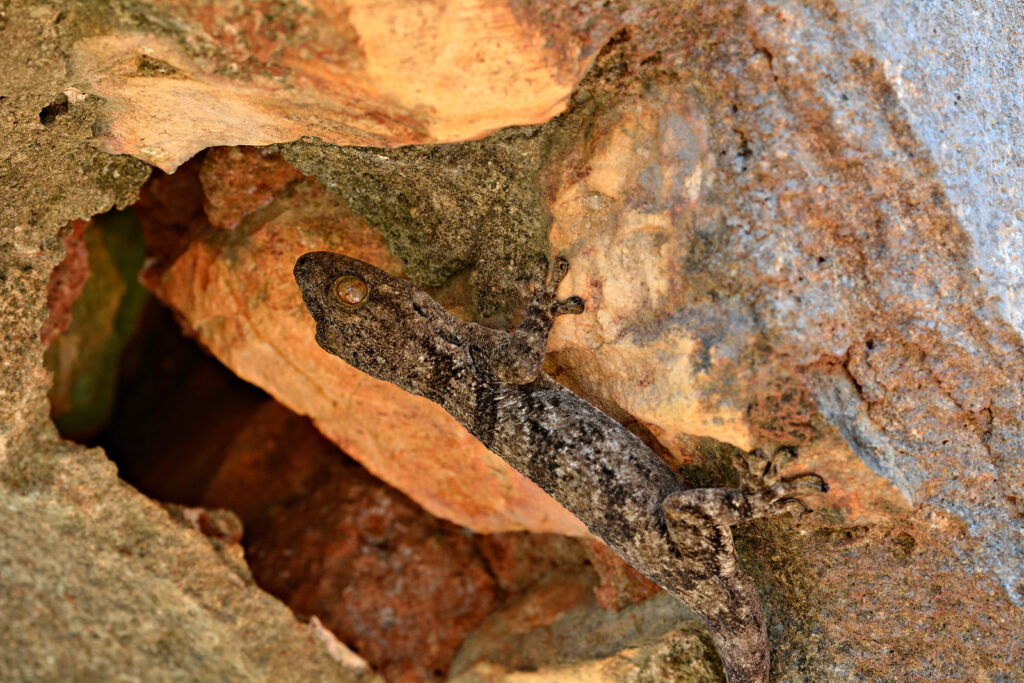
(Phelsuma lineage) is a widespread species found on banana plants, agaves, on trees in gardens, and on houses. There is a whole range of subspecies and as often common in Madagascar, it’s not clear if these are separate species or not. It’s bright green with red spots or markings. It’s mostly diurnal though will sometimes be attracted to insects around lights outside.
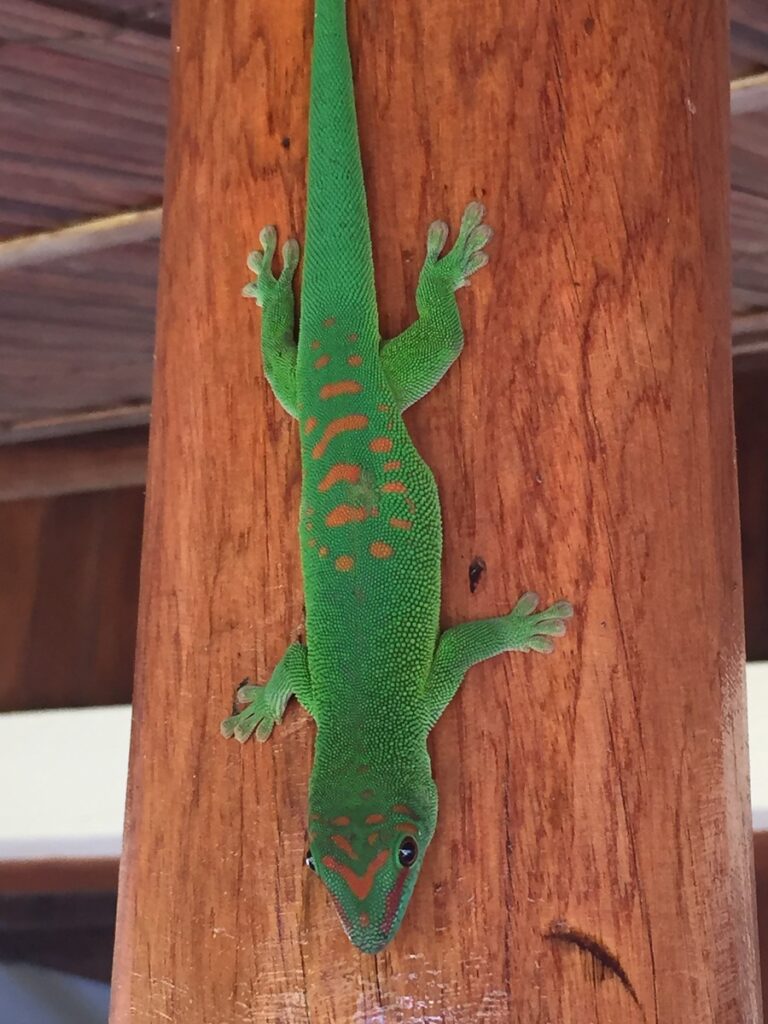
The lined flat-tailed gecko (Uroplatus lineages) is one of the Uroplatus genera, a diverse and sometimes odd-looking lot of reptiles. The color is yellowish brown with dark stripes on the back and head. It’s found in primary forest of the east coast at low altitude, often in bamboo nodes.
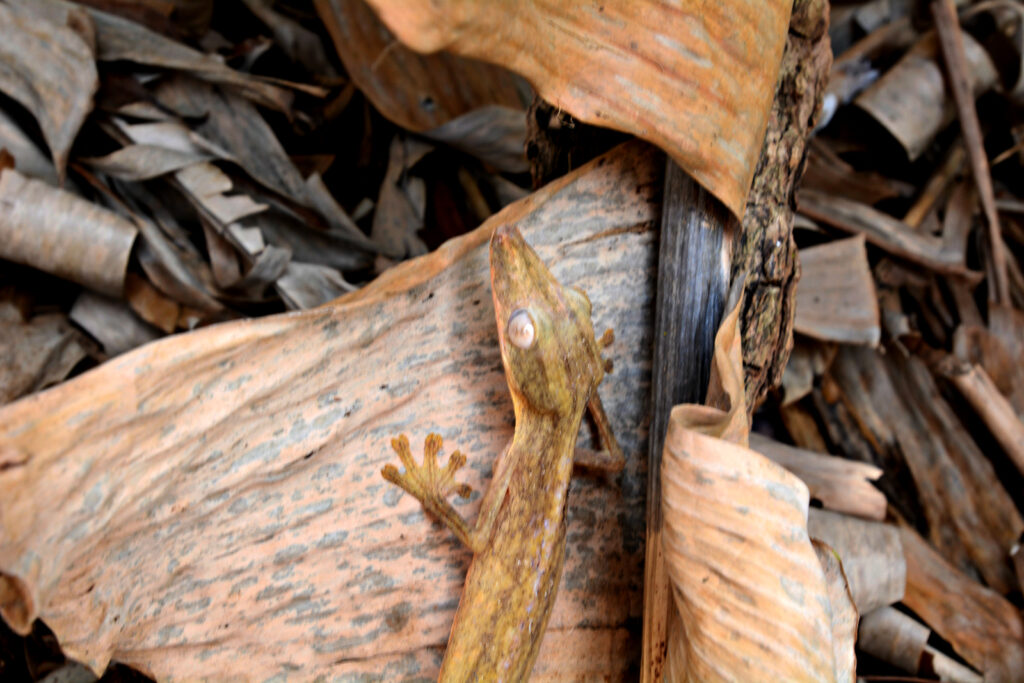
The satanic leaf-tailed gecko (Uroplatus phantasticus) is a small gecko, growing up to 10 inches. Their ability to imitate a dead, dry leaf is legendary. Many a time I’ve passed over one while combing through branches of a shrub at eye level only to have my keen-eyed guide find one. Named appropriately they have a bit of an evil look about them with small horns over the eyes. Mostly active at night they sit still on branches during the day, sometimes hanging down by their back feet to imitate a dead leaf.
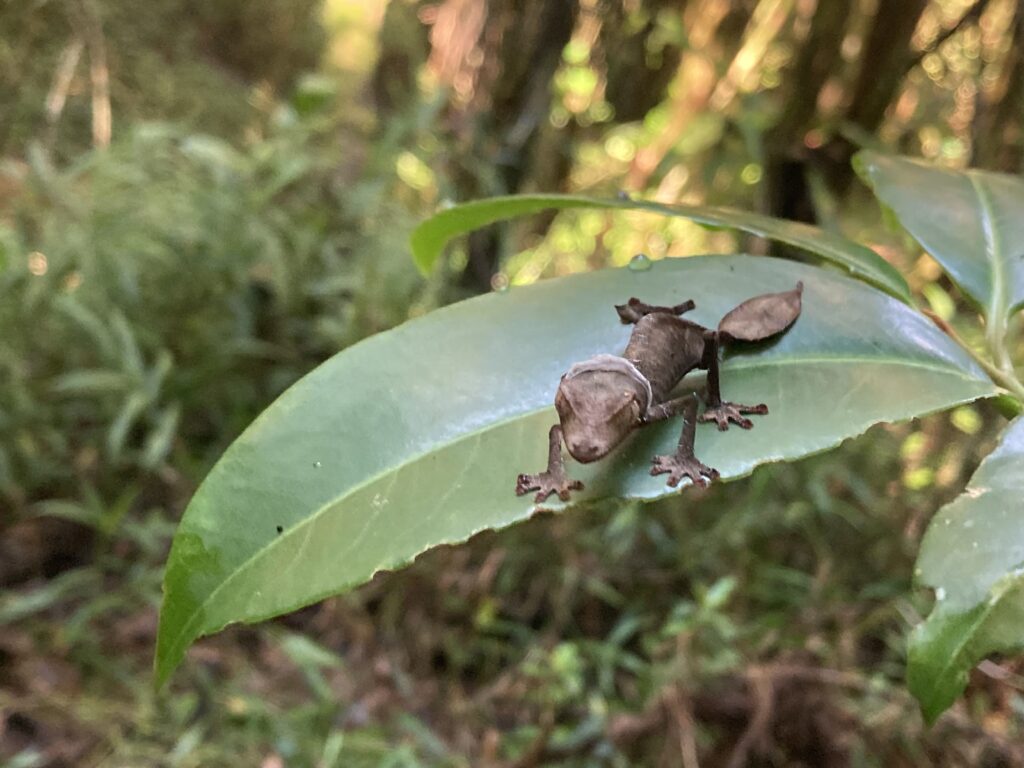
The mossy leaf-tailed gecko (Uroplatus sikorae) is known as the king of camouflage. And for good reason. It’s active at night but during the day it will lay on a branch or tree trunk and hunker down. It’s coloration perfectly matches the light green pattern of a tree trunk and lichen. The fringes along the edge of its body and head break up its outline and make it difficult to spot. Once with a guide she found one in a shrub, made an outline of a box with her hands and said “The Uroplatus is in this box.” Nope – after 5 minutes I gave up.

The giant leaf-tailed gecko (Uroplatus giganteus) is the largest of the Uroplatus geckos. They have similar habits to the mossy leaf-tailed and are maybe not as camouflaged, but they still hide pretty good. The field guide notes “Captured specimens tried to bite intensively.”
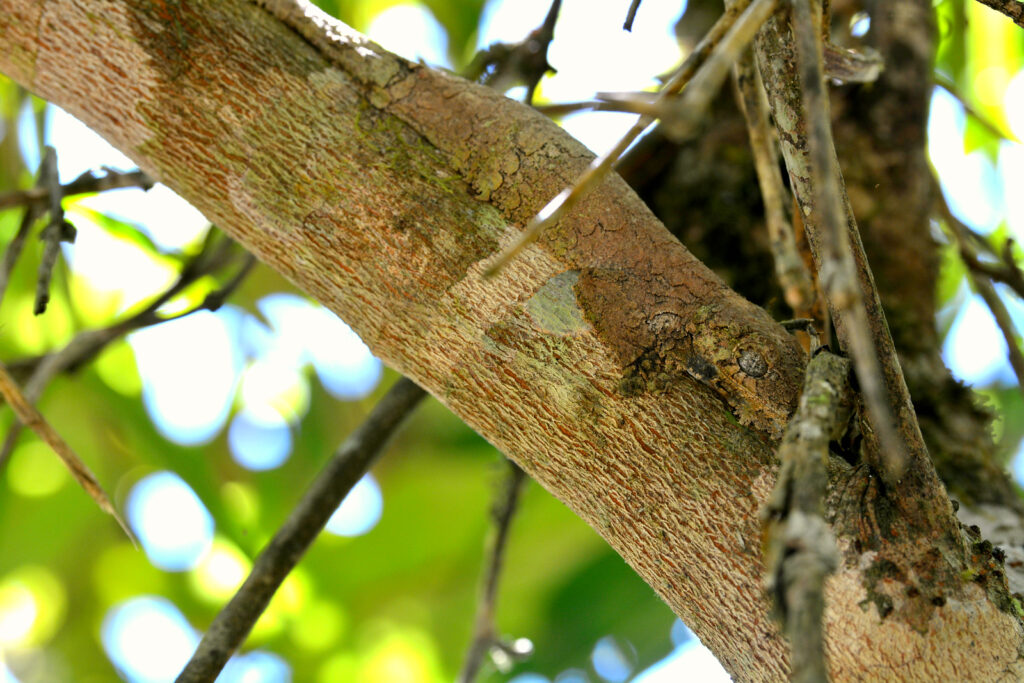
Common leaf-tailed gecko (Uroplatus fimbriatus) has typically yellow is and reddish-brown circular stripes in the eye. They are a gray-brown reminding one of tree bark. They grow to 11 or 12 inches long and are found in eastern Madagascar and on islands in Nosy Bohara and Nosy Mangabe. Found in primary low-altitude rainforests.
